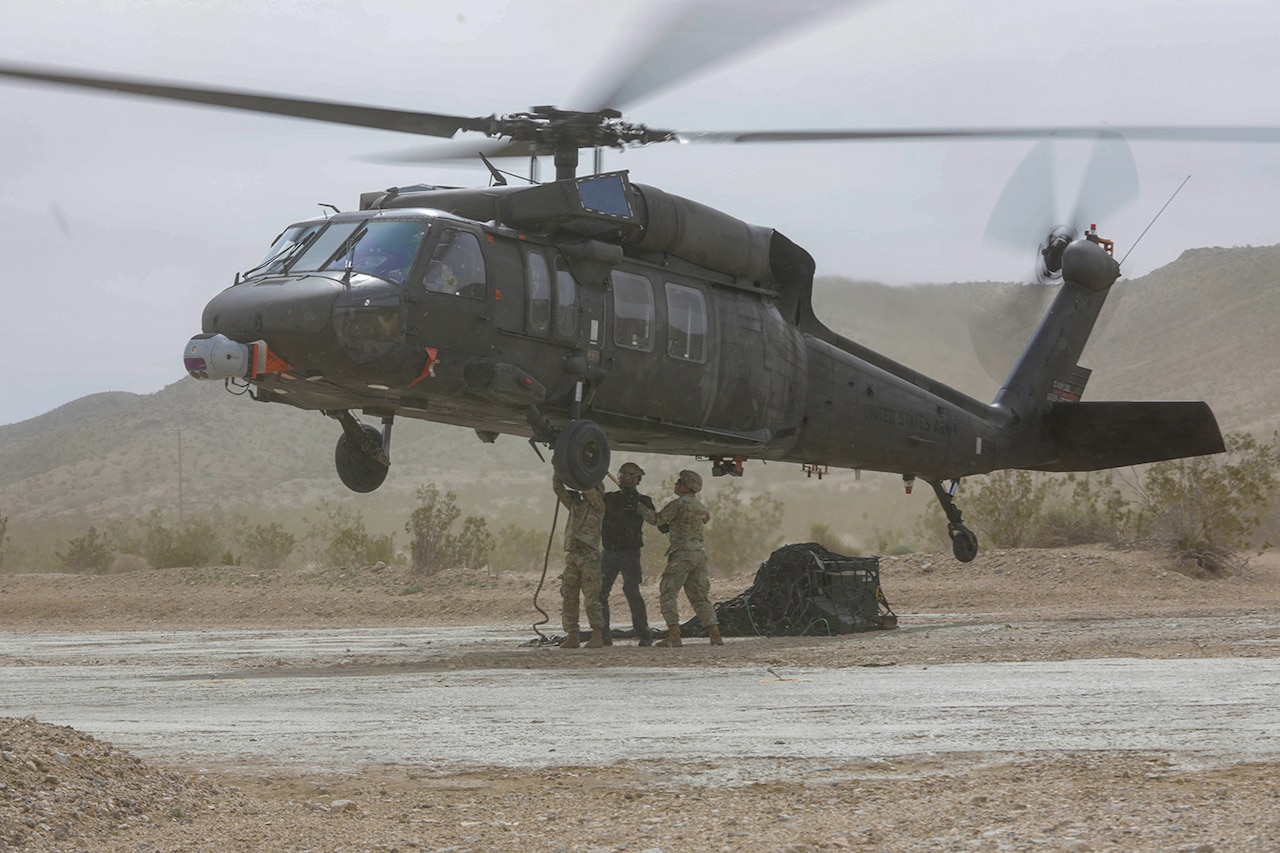The 2022 National Defense Strategy states that the department’s top priority is defense of the U.S. homeland against the growing multidomain threats posed by China and Russia, said Rebecca Zimmerman, who testified at a House Armed Services Committee posture hearing today.
While China and Russia pose the most danger to the homeland, the strategy also mentions threats from Iran and North Korea, said Zimmerman, who is performing the duties of assistant secretary of defense for homeland defense and hemispheric affairs.
“North Korea is expanding its nuclear and missile capability to threaten the homeland. Iran is testing space-launched technologies, and global terrorist groups require continued monitoring,” she said.
“Emerging technologies pose new challenges to strategic stability and demand that we adapt and adjust our posture, deterring adversaries from employing advanced threats by denying them the benefits of their aggression,” she said.
Small, uncrewed aircraft systems proliferate in the open market and their costs have decreased while their capabilities have rapidly increased, posing a threat to the homeland, Zimmerman said.
The United States also continues to face the challenge of natural and manmade hazards, she said.
Last year the U.S. homeland endured 114 incidents, 24 more than in 2022, caused by natural hazards including severe storms, tornadoes, hurricanes, floods and wildfires, Zimmerman said.
In December, Secretary of Defense Lloyd J. Austin III approved a classified homeland defense policy guidance updating the Defense Department’s approach to homeland defense to account for major changes in the global security environment, she said, adding that the department plans to publish an unclassified version later this year.
“The guidance looks to meet the challenges we face today by driving action across the department to deter threats of aggression or strategic attack to the homeland across multiple domains and the spectrum of conflict,” she said.
The guidance also identifies initiatives that contribute to DOD’s ability to project power, defend the homeland and in the event of a conflict, maintain continuity of wartime operations, she said.
Defense support to civil authorities is an important DOD activity, supporting the American public and U.S. partners in responding to disasters, public health emergencies and border security, so long as these activities do not impair warfighting readiness, Zimmerman noted.
Today between 2,500 and 3,000 military personnel are deployed to the Southwest border, supporting U.S. Customs and Border Protection activities. DOD has supported this mission for 18 of the last 21 years, she said.
“The United States derives immense benefit from a stable, peaceful and democratic Western Hemisphere that reduces security threats to our nation,” Zimmerman said.
The U.S. is deepening partnerships with Canada, Mexico, Brazil, Colombia and Chile, while reinforcing democratic institutions, civilian control of the military and respect for human rights and the rule of law, she said.
On Feb. 22, Austin participated in the 5th North American Defense Ministerial virtually with his counterparts from Mexico and Canada to discuss opportunities to strengthen North American defense cooperation, she said.
DOD is also working to sustain the department’s supporting role in Central America and the Caribbean for institutional capacity building, humanitarian assistance and disaster response, she said.
In addition, the department is participating in U.S. government efforts to support a U.N.-backed multinational security support mission in Haiti to assist the Haitian national police, she said.
Army Gen. Laura Richardson, commander of U.S. Southern Command, who also testified, said the National Security Strategy recognizes the direct link between Latin American and Caribbean security and U.S. security.
Richardson emphasized strengthened partnerships in the region to address challenges from China, Russia, other adversaries and criminals.
“The good news is working with our very willing partners leads to the best defense. We must use all available levers to strengthen our partnerships with the 28 like-minded democracies in this hemisphere who understand the power of working together to counter these shared threats,” she said.
“The United States remains the preferred and most trusted security partner in the region. We build trust through investment and security cooperation programs that train and equip our partner militaries and security forces, a robust joint exercise program to build interoperability and the development and employment of emerging technologies,” she said.
Richardson also mentioned robust interagency partnerships as being important, along with non-federal entities.
Air Force Gen. Gregory Guillot, commander of U.S. Northern Command, who also testified, noted in his prepared remarks: “Transnational criminal organizations in Mexico and elsewhere in the Western Hemisphere continue to foster instability and challenge the rule of law, creating potential opportunities for our state and non-state adversaries to expand their access and influence along our southern approaches.
“Irregular migration through Mexico reached record levels in the last year, and drug-related violence has escalated as rival cartels fight for control of lucrative drug and human trafficking routes. Cartels have also demonstrated a growing willingness to directly engage Mexican military, security forces, and government officials, highlighting the need for continued theater security cooperation with our partners in Mexico.”
Guillot also noted in his prepared remarks the rapid proliferation of small unmanned aerial system technology and usage in the homeland, including near military installations.
“While most of this activity can likely be attributed to hobbyists, sUAS could be exploited by nefarious actors for surveillance, illicit trafficking, or—in a worst case – attacks on domestic critical infrastructure. Unauthorized sUAS flights over government installations and civilian infrastructure have the potential to disrupt critical services and threaten force protection and mission assurance,” he stated.
Northcom does employ its own UAS as part of its mission, he added.
This article, Leaders Discuss Security Priorities for Western Hemisphere, was first published by The Department of Defense.








